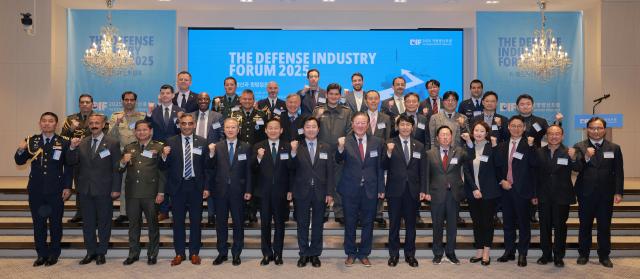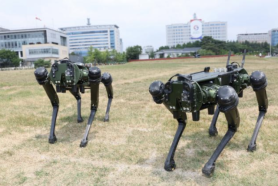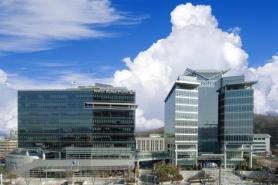
SEOUL, November 20 (AJP) - South Korea’s defense industry is enjoying an unprecedented heyday as demand for self-defense in a nation still technically at war converges with its rapidly advancing technological capabilities.
Amid simultaneous military confrontations in Ukraine and the Middle East, Korea’s defense exports have tripled and are likely to easily top 30 trillion won ($20 billion) this year.
Yet despite the rediscovery of Korea’s firepower — from tanks to howitzers to fighter jets — the sector must strengthen its long-term sustainability strategy for peacetime, experts said Thursday at the Aju Defense Forum '25, held in western Seoul and co-hosted by Aju Business Daily, the Korea Defense Industry Association (KDIA), Jeonbuk National University, and D&A Advisory.
The discussion highlighted sweeping challenges confronting Korea’s defense industry: rapid shifts in global security, shrinking military manpower, force-structure reforms, and the rise of commercial artificial intelligence. Participants included lawmakers, defense manufacturers, policy institutions, analysts, and defense attachés from around 20 countries.
Artificial intelligence — vividly demonstrated in the ongoing war in Ukraine — has become a decisive metric in combat.

The global defense AI market, valued at US$13.2 billion last year, is expected to grow to US$35.5 billion by 2031, intensifying competition as major powers integrate AI into weapons manufacturing, battlefield decision-making, and unmanned operations.
Korean companies such as Hanwha Aerospace, Hyundai Rotem, Korea Aerospace Industries (KAI), and LIG Nex1 are accelerating development of unmanned platforms, drones, and autonomous systems.
R&D spending among Korea’s five major defense firms reached 1.3293 trillion won this year, up 8.1 percent from 2023.
Wars in Ukraine and Gaza are speeding the real-world deployment of AI, robotics, and drone systems, said Kwak Ki-ho, who heads the AI Center at the Agency for Defense Development (ADD). He stressed that Korea must lean into innovation-driven strategies to stay ahead of emerging battlefield trends.
Data from the Stockholm International Peace Research Institute (SIPRI) shows Korea has emerged as the second-largest arms supplier to NATO member states over the past five years — underscoring its accelerating presence in Europe.

Platforms such as the K2 tank, K9 howitzer, and FA-50 fighter jet are rapidly expanding across the continent, led by Poland’s landmark US$22 billion procurement deal. Exports to Romania and Saudi Arabia are also increasing, solidifying Korea’s role as a global defense player.
Lim Kwu-jin, CEO of Aju Business Daily, said Korea’s defense exports — including the K9 and FA-50 — "have grown significantly in recent years, elevating the country’s global standing."
He added that government moves to ease export controls and support technology innovation "are strengthening Korea’s ability to enter new markets," and that the forum served as "a meaningful venue to discuss future battlefield requirements and long-term strategies for the sustainable growth of K-defense."
National Assembly Deputy Speaker Lee Hack-young noted that Korea’s rapid rise has placed it among the world’s leading arms exporters and said the legislature would fully support the government’s drive to elevate Korea into the world’s top four defense powers.
Still, participants stressed that Korea must bolster mid- and long-term strategic capabilities — including nuclear-powered submarines, advanced unmanned and autonomous systems, and next-generation ISR (intelligence, surveillance and reconnaissance) technologies — to maintain an edge in an era increasingly defined by AI-driven command, control, and operational systems.
Copyright ⓒ Aju Press All rights reserved.




